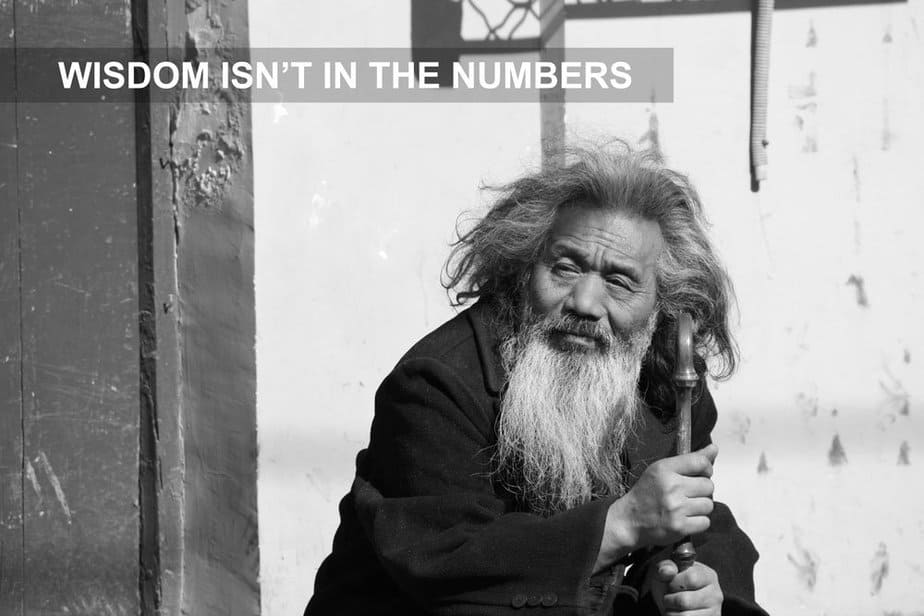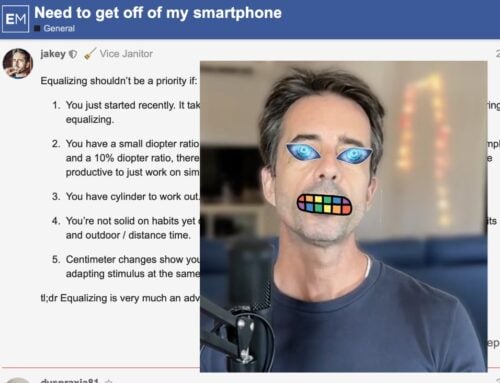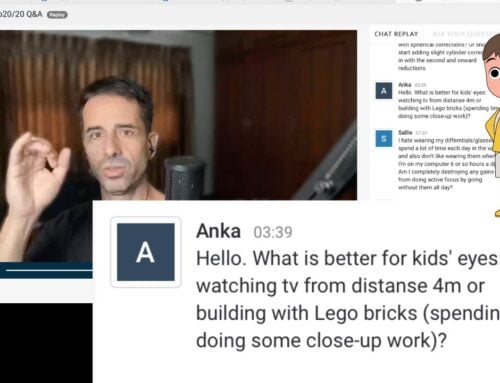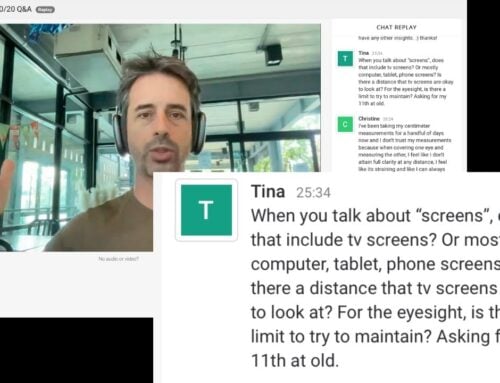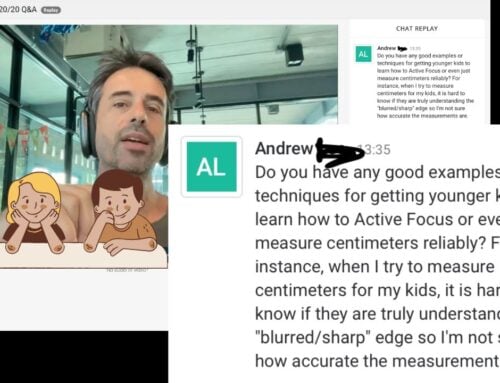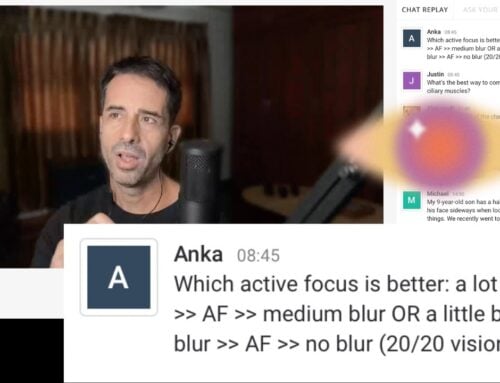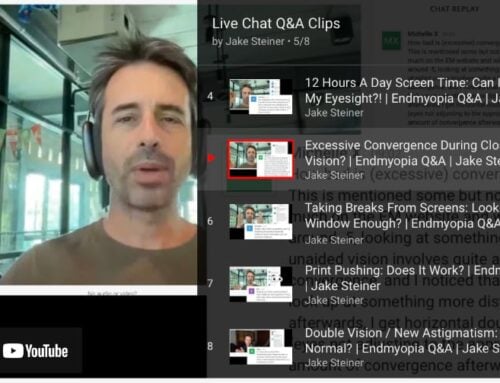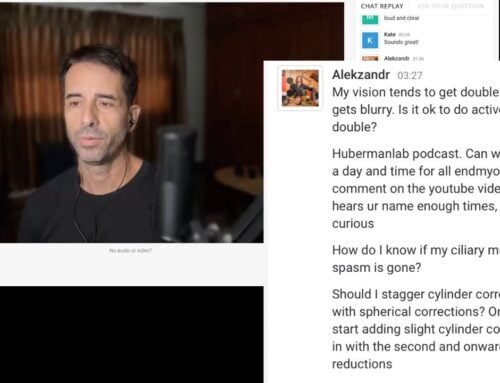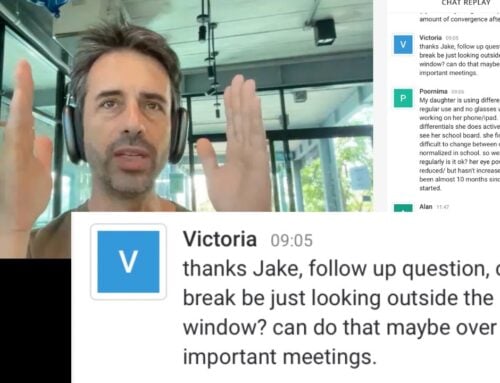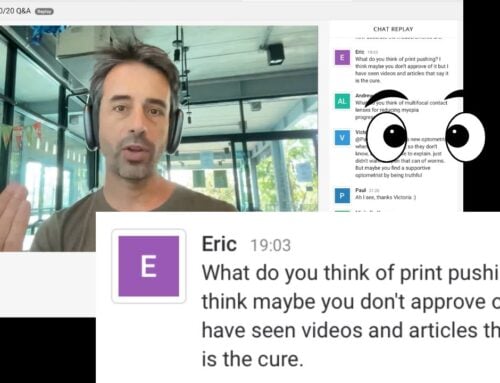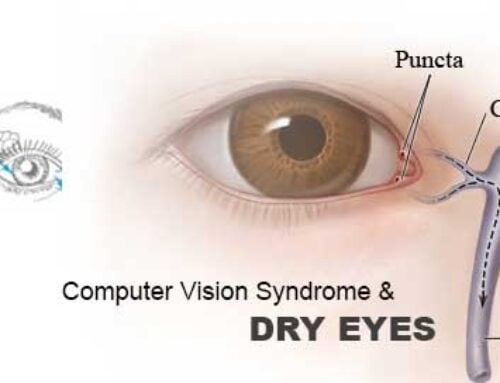Let’s talk about diopters.
Or rather, let’s talk about why we don’t talk about diopters in terms of advice (one of the few and specific rules of the @endmyopia FB group). This is important and you want to resist the urge to use any diopter numbers if you truly feel comfortable giving advice and suggestions to others (which too, you might want to approach with due caution).
So let’s dig in:
Why no diopter talk?
Diopters are the result of a process of discovery.
Diopters are the conclusion that you come to, after a series of steps to take first – after you learn about centimeter measurements, after you look at your current focal plane, after you contemplate the premise of diopter numbers increasing or decreasing the distance you can see clearly. The diopter numbers aren’t the actual answer to the newbie question. The true answer to the newbie question is to direct them to all the things they want to learn first, which will lead them to their own individual answer of diopters when they’re ready.
Diopters are always highly personal final result of learning about ones eyesight. It’s somewhat unlikely that you can answer that question correctly in one single volley of question and answer. It’s a dialog. It’s an exploration of the person’s centimeter results and desired distance, and their starting focal plane and often other aspects as well.
Another way to look at it might be this:
You can be a wise guru, directing newbies to the path to find their own diopter numbers. You’ll never be wrong, showing them the way to find their own answers.
Or … you can give a diopter guess instead which is just as likely to be less than correct for them, not getting the newbie to learn, and possibly looking like you didn’t know what you were doing (though in fact it’s just that getting the diopter answer is pretty tricky without asking lots of questions).
So it’s in everyone’s benefit to stroke your chin, straighten your guru beard, and point the newbie to the path of discovery. It’s far wiser than to try to divine the answer the newbie should go discover on their own. Make sense?
There’s a lot of great help to be offered, finding the way to the number. I’m hoping you’ll use your own experience and the tools you found to help others learn to help themselves.
One small caveat, regarding me and diopter advice:
You do find me offering diopter specific advice in the BackTo20/20 forum. Why?
The only way to get to the forum is through the path of a very structured approach of discovery (BackTo20/20 sessions). I know that those who ask questions there, are prepared because they’ve been getting the tools they need. We also take the time there to have the whole dialog of discovery, make sure that answers are considered and involve the student in the process, teach them how to arrive at their own conclusions in the future. And of course, there are plenty of scenarios where it genuinely is difficult for someone just starting out, to get the numbers they need.
Consider too that while I’m no wiser a guru than any kitteh guru here working on their own eyesight, I do have the vague benefit of over a decade of seeing all sorts of scenarios. I might have additional ideas just because I’ve probably been there before, with another student. The unusual diopter ratio, the high astigmatism, the middling presbyopia, the need for contacts, troubleshooting various scenarios, not seeing results, thousands of scenarios that may be new to you, but possibly in the library of experiences for me.
Incidentally, in the blog (“free guides”), I try to catalog as many of these insights as possible, to make myself increasingly redundant as time passes.
So there you have it. Be a wise one, pointing others on the path rather than taking the unnecessary risk of trying to guess the result of the new student’s journey. ;)
Cheers,
-Jake

